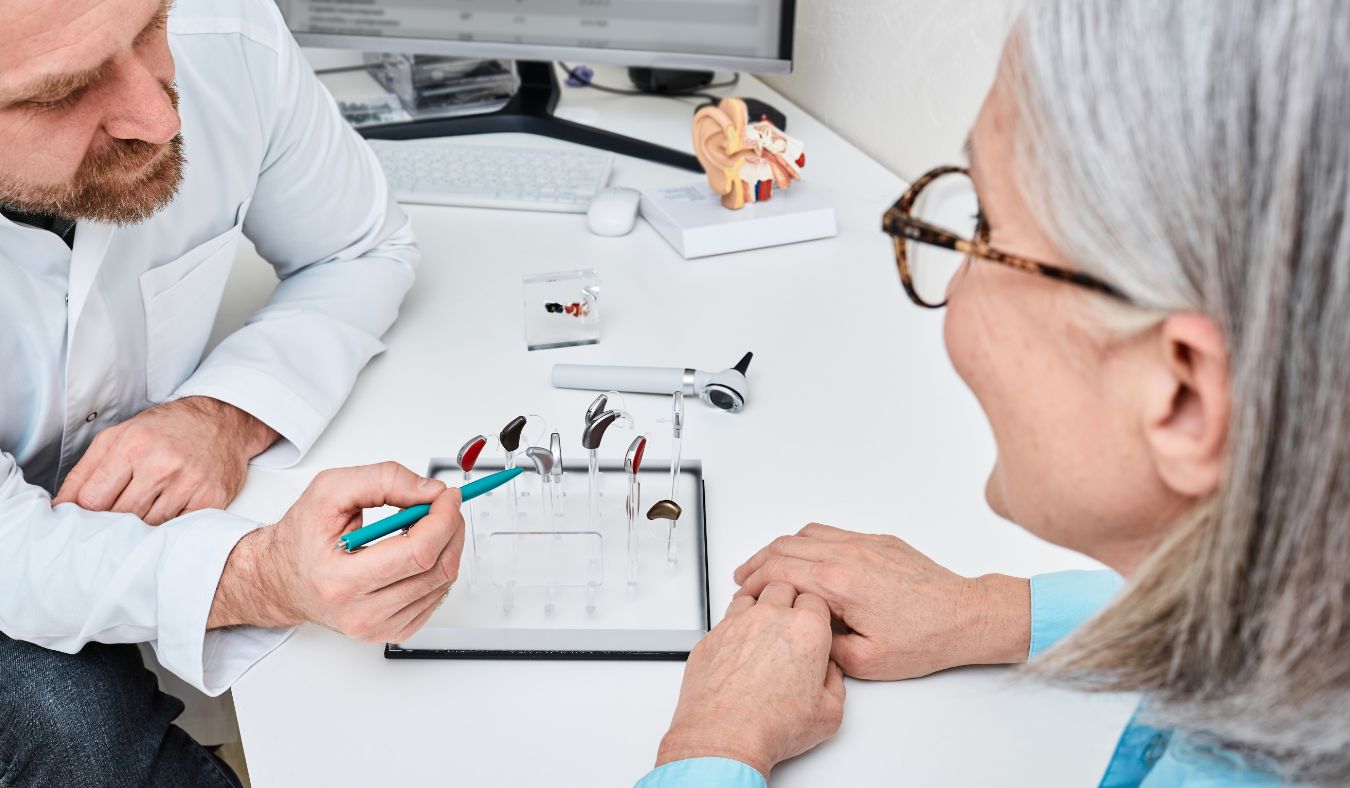Innovations in Hearing Aid Battery Technology
For hearing aid wearers, the reliability of their device throughout the

By: admin | October 20, 2025
For hearing aid wearers, the reliability of their device throughout the day is important for staying engaged in conversations and daily activities. Battery technology plays a significant role in how well hearing aids fit into everyday life. Traditional disposable batteries required frequent replacement and careful attention, while newer options have changed the way people use their devices. These improvements have made hearing aids more consistent and easier to manage.
Advances in battery design have created choices that better suit different routines and needs. Modern batteries tend to last longer, charge more quickly and offer more dependable performance than earlier types. Hearing health professionals can help individuals select the battery solution that best fits their lifestyle and hearing requirements. Understanding the available options allows wearers to make practical decisions when choosing or upgrading hearing aids. Overall, these developments have made wearing hearing aids simpler and more adaptable to daily life.
Hearing aid batteries have evolved significantly over time, transitioning from basic disposable options to more advanced, long-lasting solutions. Early hearing aids relied on small zinc-air batteries that needed frequent replacement, which could be inconvenient. These batteries required careful handling and regular attention to ensure the device stayed powered throughout the day. As technology developed, batteries were designed to provide longer life and more consistent performance, reducing interruptions caused by frequent changes.
In recent years, rechargeable batteries have become increasingly common, offering greater convenience and reliability. Hearing aids can now be recharged overnight, removing the need to carry spare batteries or worry about the device losing power during the day. Modern batteries maintain stable energy levels, supporting advanced features like wireless connectivity and noise management. Hearing health professionals can help determine which battery type best fits a person’s lifestyle and device needs. These improvements have made hearing aids easier to manage and more seamlessly integrated into daily life.
Hearing aids today rely on a few common types of batteries, each designed to meet different needs and device sizes. Zinc-air disposable batteries remain widely used for their reliability and compact size. These batteries are activated by air and come in standardized colors and numbers that correspond to the size of the hearing aid. They are easy to replace and provide consistent power, though they require regular changes depending on the device and usage. Many individuals appreciate the simplicity and accessibility of these traditional options.
Rechargeable batteries are becoming increasingly popular as an alternative to disposable types. These batteries can be charged overnight or during the day with portable chargers, reducing the need for frequent replacements. They are often integrated into the hearing aid itself, offering convenience for people with active lifestyles. Hearing health professionals can help individuals determine which type of battery works best for their devices, routines and preferences. Understanding the differences between these options makes it easier to choose a solution that provides reliable performance and fits into daily life.
Battery life has a direct effect on how well your hearing aids perform. Low batteries can cause weaker sound, shorter use or sudden shutoffs. This can be especially frustrating if you depend on your hearing aids for conversations or work. Running out of power at inconvenient times is a common problem. Charging your hearing aids overnight or carrying spare batteries can help prevent interruptions. Taking these simple steps keeps your hearing aids working well so you can focus on your day.
Traditional disposable batteries often need to be replaced every few days. This can be difficult if you have limited hand movement or vision. Common issues include remembering to buy replacements, opening small packages, dropping or losing batteries and confusion about how to insert them. Safe disposal is also important, as used batteries can be harmful to children and pets if left out.
Rechargeable hearing aid batteries offer a convenient alternative to traditional disposable batteries. On a full charge, most rechargeable batteries can power hearing aids for a full day, although actual battery life can vary depending on usage and device settings. These batteries are designed to be recharged many times, often lasting for several years before needing replacement.
One of the benefits of rechargeable batteries is that they reduce the need to handle small disposable batteries, which can be difficult for some individuals. Charging is usually simple, often involving a dedicated charging station that makes it easy to power the devices overnight or between uses. Hearing health professionals can help explain how to maintain these batteries properly to ensure consistent performance and long-term reliability. This makes managing hearing aids more straightforward and less dependent on frequent battery changes.
Recent advances in lithium-ion batteries have made hearing aids more reliable and easier to use. These batteries now last longer and charge faster than earlier versions. Some improvements include:
Handling hearing aid batteries has become simpler thanks to better design and sizing. Many modern batteries are shaped for easier gripping, which is helpful if you have trouble with small objects. Some hearing aids now include color-coded compartments or magnetic tools for battery changes. Rechargeable hearing aids also remove the need to handle tiny batteries, which is especially useful for those with dexterity issues. These changes reflect a focus on user-friendly features, like simple charging docks and clear battery indicators.
Many people are looking for battery options that are better for the environment. Modern rechargeable batteries and mercury-free disposable batteries are now widely available. These choices help reduce waste and limit harmful materials in landfills. Rechargeable batteries can be used many times before needing replacement, which means fewer single-use batteries are thrown away. Mercury-free zinc-air disposable batteries do not contain toxic metals, making them safer for the environment. Both options support a cleaner planet.
Switching to environmentally friendly batteries can make a positive impact over time. These advancements show how hearing aid technology continues to improve for both individuals and the world around us.
Faster charging times for hearing aid batteries can make your daily routine smoother. Quick charging means less waiting and more time using your hearing aids when you need them. You can recharge during short breaks or while getting ready in the morning. Shorter charging times also help reduce worry about running out of power during important moments. You can feel more at ease knowing your hearing aids will be ready when you are, making it easier to keep up with work, family and social activities.
Modern hearing aid batteries include several safety features designed to protect both you and your device. Many disposable zinc-air batteries now come with built-in protections to prevent leakage, which can damage hearing aids or irritate the skin. Some batteries also have tamper-resistant designs to reduce the risk of children or pets accidentally swallowing them. These measures help ensure that hearing aids remain safe and reliable during daily use.
Rechargeable hearing aid batteries also incorporate safety features to prevent overcharging or overheating. Charging stations often include automatic shut-off functions that stop the flow of electricity once the battery is fully charged. Additionally, many rechargeable systems are designed to maintain stable performance even after hundreds of charging cycles. These safety features give individuals confidence that their hearing aids will operate effectively while minimizing potential risks associated with battery use.
Smart technology now helps you manage hearing aid batteries more easily. Many modern hearing aids connect to smartphone apps that show real-time battery levels, send alerts when power is low and remind you to charge your devices. Using these features can help you avoid unexpected power loss and keep your hearing aids working smoothly.
To extend the life of your hearing aid batteries, turn off your hearing aids when not in use and store batteries in a cool, dry place. Heat and moisture can shorten battery life. Keep battery contacts clean by wiping them with a dry cloth before inserting new batteries. If you use zinc-air batteries, remove the sticker and let the battery sit for about a minute before putting it in your hearing aid to allow it to fully activate.
Open the battery door at night to let moisture escape, which helps prevent corrosion and extends battery life. Avoid carrying loose batteries in your pocket or bag, as contact with metal objects like keys or coins can drain them quickly.
Store hearing aid batteries in a cool, dry place and avoid exposing them to heat or moisture. Check battery packaging for expiration dates and keep unused batteries in their original packaging until needed. Caring for hearing aid batteries is similar to caring for regular household batteries. Both types lose power quickly if left in humid or hot areas. For zinc-air batteries, only remove the sticker when you are ready to use one. For rechargeable batteries, always use the charger provided with your hearing aids and follow manufacturer instructions to avoid overcharging. Proper storage and handling help prevent leaks, corrosion and early battery failure.
The best hearing aid battery for you depends on your daily routine and needs. If you are often busy or have trouble handling small objects, rechargeable batteries may be more convenient since they remove the need for frequent changes. If you prefer not to worry about charging, zinc-air disposable batteries are a simple option that can be replaced quickly.
Consider how often you use your hearing aids, your comfort with handling small parts and your access to charging stations or replacement batteries. Those who travel frequently or have full schedules might find rechargeable options easier, while others may prefer the flexibility of carrying spare disposables. Choosing a battery type that fits your lifestyle helps keep your hearing aids reliable and easy to use.
If you are unsure which battery type is best for you or have concerns about battery life, it may be time to talk with a hearing health professional. Changes in your routine, new hearing aid features or trouble handling batteries are all good reasons to ask for advice. Hearing health professionals can help you:
Hearing aid battery technology now offers more options and convenience than ever before. With improvements in rechargeable batteries, faster charging times and safer designs, you can rely on your hearing aids with greater confidence. These advancements make daily life easier and help you stay connected with those around you.
If you have questions about battery options or need help finding the right fit for your hearing aids, our team is here to assist you. Reach out to Hear Again America at (877) 905-9493 at any time to discuss your needs and learn more about the latest in hearing aid battery technology.
Tags: benefits of hearing aids, hearing aid features, hearing aid technology

For hearing aid wearers, the reliability of their device throughout the
By: admin | October 20, 2025

As we get older, we often focus on staying physically fit, eating well and
By: admin | July 29, 2025

When warmer weather arrives, outdoor concerts and festivals become some of
By: admin | June 20, 2025